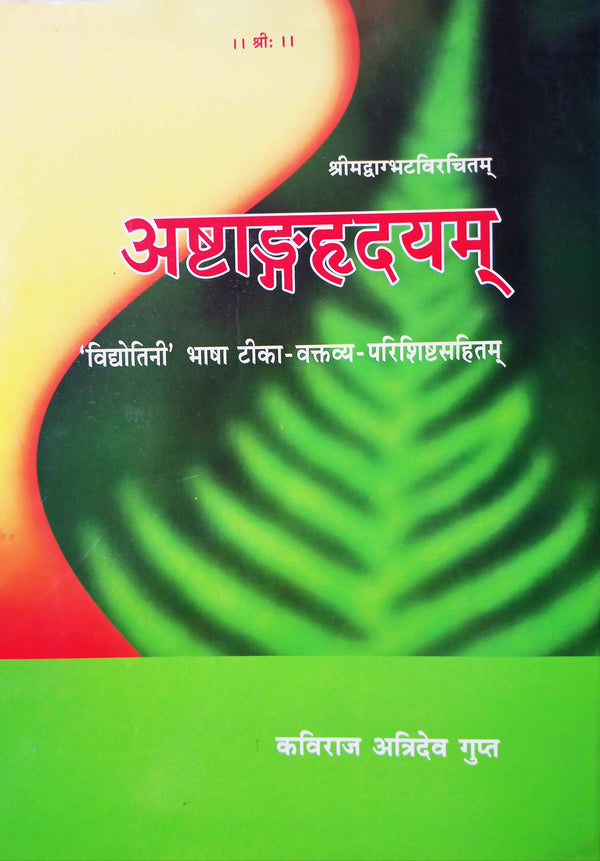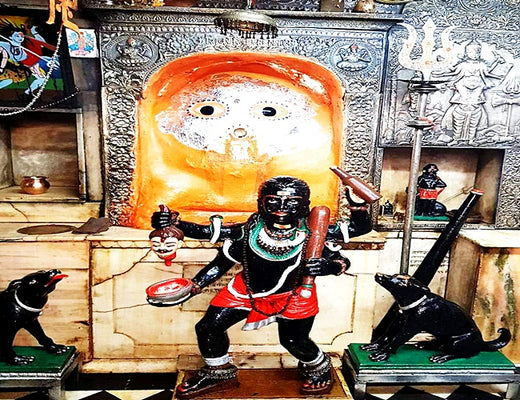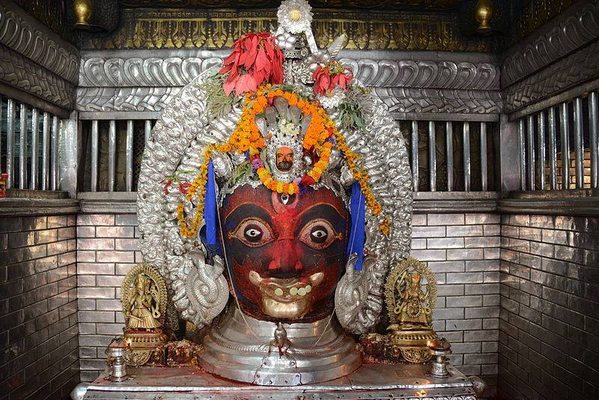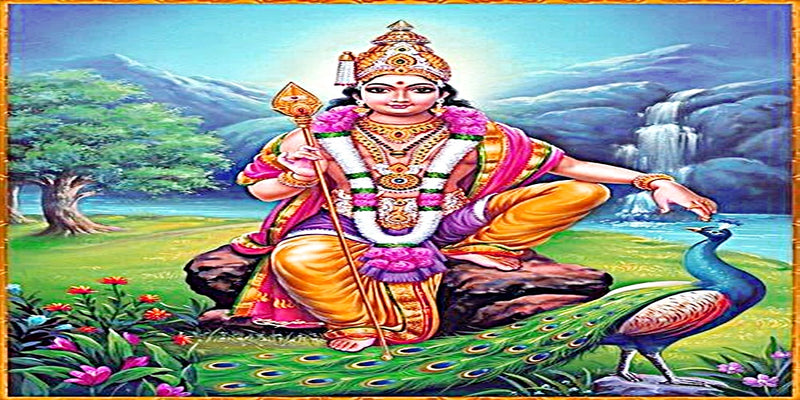Peepal tree in Hinduism

In the Hindu religion, Peepal tree has a lot of reverence and significance for people. People worship the tree and perform a puja. But, nobody really knows anything about its history & origin. Well, there are also some interesting legends associated with the Peepal tree. The tree is known for its heart shaped leaves that have long narrowing tips. The origin of peepal tree can be traced back to the times of Indus Valley Civilization (3000 BC - 1700 BC) in the Mohenjodaro city. Excavations are suggestive of the fact that even in those times; the Peepal tree was worshipped by Hindus. To know more about the origin of Peepal tree, read on.
During the Vedic period, the wood obtained by cutting Peepal tree was used to produce fire. In the ancient Puranas, an incident has been described in which the demons defeated the deities and Lord Vishnu hid in the Peepal tree. Since, the Lord resided in the tree for some time; the tree holds great importance for people. Thus, people began worshipping the tree, considering it to be a means of offering prayers to Lord Vishnu. There are a few legends, which suggest that Lord Vishnu was born under the peepal tree. There are a couple of stories, which say that the tree is home to the trinity of Gods, the root being Brahma, the trunk is Vishnu and leaves represent Lord Shiva. Another popular belief is that Lord Krishna died under the Peepal tree. Peepal or pipal (Ficus religious) Tree also known as "Ashvattha" in Sanskrit is a very large tree and the first-known depicted tree in India. A seal discovered at Mohenjodaro, one of the cities of the Indus Valley Civilisation depicts the peepal being worshiped.
Upanishads have also made a mention about the Peepal tree. To clearly define the difference between the body and soul, the fruit of peepal is used as a classic example. According to the Skanda purana, a person who does not have a son should consider the peepal tree as his own child. It says that the family will prosper and have a good name, till the peepal tree survives. Cutting a peepal tree is regarded as a big sin, which is almost equivalent to murdering a Brahmin. Skanda Puranas say that a person who cuts the tree surely goes to hell.
Reference of Peepal tree in ancient texts
Bhagavad Gita : Chapter 15.1,
sri-bhagavan uvaca
urdhva-mulam adhah-sakham
ashvattham prahur avyayam
chandamsi yasya
parnani
yas tam veda sa veda-vit
“The Supreme Personality of Godhead said: It is said that there is an imperishable Peepal tree that has its roots upward and its branches down and whose leaves are the Vedic hymns. One who knows this tree is the knower of the Vedas."
Bhagavad Gita : Chapter 15.2,
adhas cordhvam prasrtas tasya
guna-pravrddha visaya-pravalah
adhas ca mulany anusantatani
karmanubandhini manushya-loke
"The branches of this tree extend downward and upward, nourished by the three modes of material nature. The twigs are the objects of the senses. This tree also has roots going down, and these are bound to the fruitive actions of human society."
Bhagavad Gita : Chapter 15.3 & .4,
na rupam asyeha tathopalabhyate
nanto na cadir na ca sampratishtha
ashvattham enam su-virudha-mulam
asanga-sastrena drdhena chittva
tatah padam tat parimargitavyam
yasmin gata na nivartanti bhuyah
eva cadyam purusham prapadye
yatah pravrttih prasrta purani
"The real form of this tree cannot be perceived in this world. No one can understand where it ends, where it begins, or where its foundation is. But with determination one must cut down this strongly rooted tree with the weapon of detachment. Thereafter, one must seek that place from which, having gone, one never returns, and there surrender to that Supreme Personality of Godhead from whom everything began and from whom everything has extended since time immemorial."
Some believe that the tree houses the Trimurti, the roots being Brahma, the trunk Vishnu and the leaves Shiva. The gods are said to hold their councils under this tree and so it is associated with spiritual understanding.
The Brahma Purana and the Padma Purana, relate how once, when the demons defeated the gods, Vishnu hid in the peepal. Therefore spontaneous worship to Vishnu can be offered to a peepal without needing his image or temple.
The Skanda Purana also considers the peepal a symbol of Vishnu. He is believed to have been born under this tree. In the Upanishads, the fruit of the peepal is used as an example to explain the difference between the body and the soul: the body is like the fruit which, being outside, feels and enjoys things, while the soul is like the seed, which is inside and therefore witnesses things.
Legends related to Peepal tree
Once, all the gods decided to visit Lord Shiva. However, sage Narad informed them that it was an inappropriate time for a visit. But Indra did not heed the advice and assured the gods that there was nothing to fear when he was there to protect them. Narad reported Indra's arrogance to goddess Parvati. She cursed the gods that they, along with their wives, would turn into trees. When the gods asked for forgiveness, she promised that as trees, they would attain fame. Thus Lord Indra turned into a mango tree, Lord Brahma became a palash tree and Lord Vishnu turned into a peepal tree. Also Goddess Laxmi is believed to have reside the Peepal tree on Saturdays. Lord Krishna is believed to have died under the Peepal tree. In classics the cutting of Peepal tree is consider as sin. Peepal tree is also believed to be the abode of lord yama (god of death) and ancestors. Offerings made at its roots are believed to reach them. Another myth is regarding link between peepal and the Saturday. According to classics Ashvattha and Peepala were two demons who harassed people. Ashvattha would take the form of a peepal and Peepala the form of a Brahmin. The fake Brahmin would advise people to touch the tree, and as soon as they did, Ashvattha would kill them. Later they were both killed by Shani. Because of his influence, it is considered safe to touch the tree on Saturdays. It is believe that one who plant this tree get librated from the bond of life and death.
Another legend says , It is preferred to touch the peepal tree only on Saturdays. It is said that once upon a time, there were two demons, namely Ashvattha and Peepala, who used to torture and harass people. Ashvattha took the form of peepal and the Peepala disguised as Brahmin. The Brahmin used to recommend people to touch the peepal tree and as soon as they did so, they were killed by the demon Ashvattha. Both the demons were killed by Shani devta. It is due to the strong influence of Shani Maharaj that it is considered safe to touch the peepal tree on Saturdays. People are of the belief that even Goddess Lakshmi dwells in the tree on Saturdays. Women who are not blessed with a son tie a red thread around the trunk or on its branches asking the deities to bless her and fulfill her desire.
Rituals related to Peepal tree
Women circumambulate the peepal tree to be blessed with children or to gain a desired thing or person. Peepal tree is planted in the temples of shani and hanuman. The tree is worshipped on saturday, especially in the month of Shravana, because goddess Lakshmi sits under the tree on this day. Any person who waters the tree is believed to earn merit for his progeny, his sorrows are redeemed and diseases cured. The peepal tree is also worshipped to escape from contagious diseases and enemies.
There is also another story about two demons, Aswatha and Peepali who made the peepal treetheir home and attacked and killed all who came near the tree. In the end Shani bhagavan destroyed the two asuras and hence it is believed that it is auspicious to touch the peepal tree on Saturdays.
Tribals in bengal call the peepal tree as vasudev. They water the plant in the month of vaishakh and at times of difficulty. In Bengal, peepal and banyan trees are married.
A peepal tree is planted to the east of the house or temple. Eight or 11 or 12 years after the tree has been planted, the upanayan ceremony is performed for the tree. A round platform is constructed around the tree. Different gods like Narayan, Vasudev, Rrukmini, Satyabhama are invoked and worshipped. All the rituals of the upanayan ceremony are performed and then the tree is married to the basil plant.
In Tamilnadu, peepal and neem trees are planted so close to each other that they mix up as they grow. A naga (snake) idol is placed under them and worshipped. This is believed to bless the worshipper with wealth. Women take an early morning bath and circumambulate these trees.
In Awadh, if a girl's horoscope predicts widowhood, she is first married to a peepal tree on chaitra Krishna or ashwin Krishna tritiya. In olden days, when remarriage was forbidden for girls, young widows were married to the peepal tree and then allowed to remarry.
People belonging to dhantale caste who reside in Maharashtra, Karnataka and Madhya Pradesh use a branch of the peepal tree in the marriage ceremony. The branch, along with a pot of water, is placed between the bride and groom. The village deity is installed under the peepal tree which also provides a shaded place to hold the panchayat in many places.
On Amavasya, villagers perform a symbolic marriage between the neem and the peepal, which are usually grown near each other. Although this practice is not prescribed by any religious text, there are various beliefs on the significance of 'marrying' these trees. In one such belief, the fruit of the neem represents the Shivalinga and so, the male. The leaf of the peepal represents the yoni, the power of the female. The fruit of the neem is placed on a peepal leaf to depict the Shivalinga, which symbolises creation through sexual union, and so the two trees are 'married'. After the ceremony, villagers circle the trees to rid themselves of their sins.
Scientific Reserch
Scientific research has revealed that among tress, Peepal is the only tree that produces oxygen in abundant quantity day and night, which is so essential for life. Peepal provides life sustaining oxygen, which proves it to be a life sustainer. Continuously research has also proved that the sound and interacting flow of wind, with peepal leaves, slowly but surely kills infection bacteria as well. According to the book of Ayurveda, peepal leaves, fruits and bark are killers of diseases. People tree has both sweet and bitter taste and has a cooling property. Licking honey placed on peepal leaves is believed to cure speech irregularities. Its bark yields the tannin used in treating leather. Its leaves, when heated in ghee, are applied to cure wounds. Ingesting the bark, fruit and buds with different combination of things cures diseases related with phlegm, bile, inflammation swelling and indisposition etc. The soft bark and the bud of this tree cure 'Prameha' (a disease in which sperms emanate through urine). The powdered form of the fruit of this tree increases appetite and cures numerous diseases
Medicinal Use
Ficus religiosa is used in traditional medicine for about 50 types of disorders including asthma, diabetes, diarrhea, epilepsy, gastric problems, inflammatory disorders, infectious and sexual disorders.













